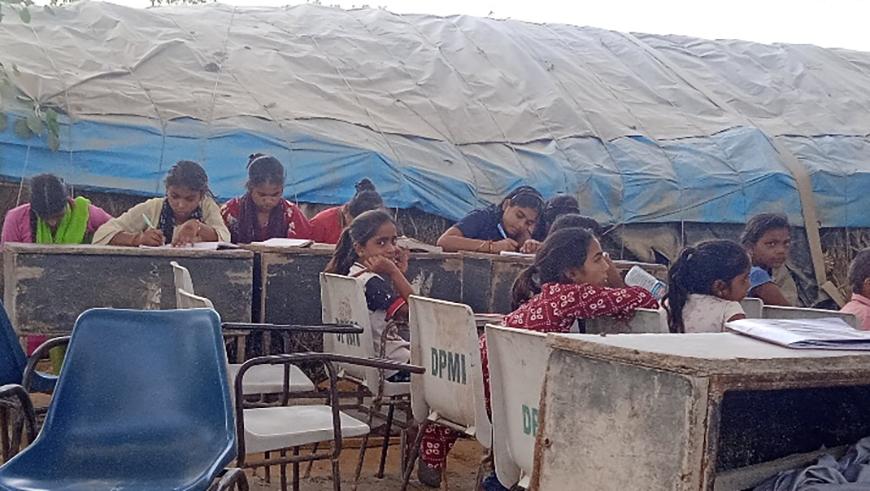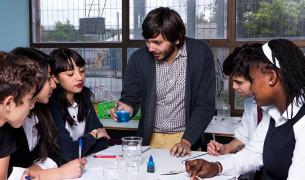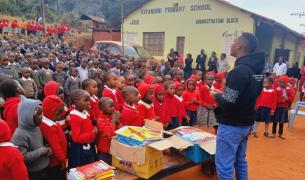Empowering the next generation for a resilient future: Why does India need an Education in Emergencies Protocol?

According to the UN, over 1 billion children have had their lives disrupted by disasters since 2000, with over 80,000 schools damaged or destroyed. Beyond the risk of death and injury, children in the aftermath of such crises face cascading impacts such as disruptions in schooling, nutrition, healthcare and protection issues. My country, India, is sadly one of the most disaster-prone countries in the world, with 27 out of our 29 states and seven union territories under the threat of natural hazards and an estimated 528,000 people internally displaced by disasters. Each year, thousands of families across India are affected by different emergencies, ranging from landslides and floods to enforced displacements and violence. Often, communities living in hazard-prone areas learn to cope with the risks and develop their resilience as time passes by.
Last month was International Disaster Risk Reduction Day, and this year, the theme highlights the crucial role that education plays in protecting and empowering children for a disaster-free future. I’m excited to see so many resources now published across the globe to help teachers promote a culture of disaster prevention — including various online video-games to help children develop skills and awareness in disaster management, classroom activities for building safety preparedness of students, lesson plans for trauma-responsive teaching, and more!
When I think about the context in India, I question why schools across my country don’t have separate datasets of which students or batches are affected during conflicts or natural disasters. Without a holistic framework, our schools are often left to deal with such crises alone and can struggle to follow-up on children who’ve dropped out of the learning environment due to the crisis.
One such hazard in India is rampant floods. Though there are disaster management frameworks in schools in Delhi, where I teach, they are often limited to mock drills conducted once a year. As an educator, I need to be trained or prepared on how to sustain the holistic education of my students during or after such an event. In the absence of a protocol, educators often cannot act promptly without the support of the state administration. Integrated disaster management curricula in Indian states prone to natural disasters are still in inception. And unfortunately the curriculum does not address issues like riots and demolitions, which equally displace thousands of families, now frequent in the Northern states of my country.
Educators across India would really benefit from a well-defined Education in Emergencies (‘EiE’) protocol that ensures education is sustained and continued during and after the emergency. The prolonged loss of learning during an emergency not only severely impacts children’s grade level proficiency but also affects their socio-emotional well-being, their chances of developing the skills needed for employment and their ability to choose suitable career options.
But there are many beams of incredible leadership happening across our schools. For example, after the recent devastating floods in Assam, the Assam State Disaster Management Authority, in collaboration with UNICEF, promptly distributed Child-Friendly Space Kits. These Kits included learning materials, lesson equipment and resources to ensure continuity of education and to mitigate the loss of learning following the floods.
As an educator, here are a few key things I think could improve disaster preparedness and EiE in India’s education system:
- Ensuring schools are a key part of the local early warning system.
- Including age-appropriate disaster education in the curriculum so Indian children can understand and act on the risks they face.
- Teaching life-saving and survival skills in our schools (e.g. swimming lessons in flood-prone areas or fire safety knowledge in fire-prone areas).
- Conducting school-organized disaster evacuation drills.
- Creating engaging learning materials and activities, such as cartoons, comics, competitions, songs or films, aimed at educating our children about disaster risks and how we can reduce the impact by creating safe buildings and nature-friendly constructions.
- Setting up Disaster Risk Reduction clubs or committees in our schools, bringing together students, teachers, principals and parents.
- Designing an EiE Framework, which includes an action plan to develop 21st-century skills in students, a mobile learning environment for displaced children, and context-based holistic learning plans and materials to develop student leadership in their communities to ensure that education for these children does come to a standstill during a crisis.
I think the scale of emergencies across India, and so many other countries in the world, calls for contextualized EiE curricula to prepare school systems for disasters and minimize the learning loss of impacted children. A national EiE protocol for India could play a significant role in mitigating the gap between policy intent and policy implementation at the school- and classroom levels. As an educator, I believe this can only be possible through a participatory approach — getting input from different enablers and stakeholders like members of crisis-prone communities, teachers, students, local governing bodies, and civil society organizations. The crisis-affected children in my country need this collective leadership!
Children and youth under 30 currently make up more than half the world’s population. They are the ones who will benefit most from reducing the risk and impact of disasters. The children I teach are the future architects, mayors, doctors, and parents of the world of tomorrow. If they know what to do to reduce the impact of disasters and how to sustain education during a crisis, they will create a safer world.



